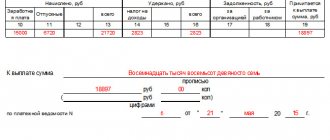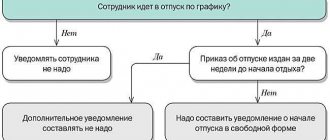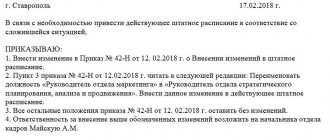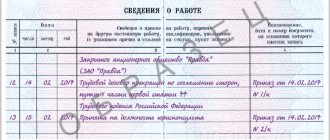What is an explanatory note?
Business papers play an important role in our lives. And any employee, student or researcher sooner or later is faced with the need to write an explanatory note. Such a note is provided for different cases; it is a document accompanying the thesis, as well as other scientific work, an accounting report or a document for the tax authorities. The very content of the explanatory note is determined by which document or scientific work it is attached to.
The document has a restrained and clear style; it uses standard expressions, professional terms, and personal pronouns are excluded. A note of this kind does not give any assessment of the narrative.
If we are talking about financial statements, the document describes:
- Activity of the company;
- Income or expenses;
- The base is intangible and material;
- Debts, etc.
An explanatory note created for a scientific work reflects the purpose of creating the work, its significance and relevance. For a technical project, the scope of use and technical parameters, as well as data on the purpose of the system or object, must be indicated.
Such a document was originally created in order to explain the contents of other papers. In educational institutions, when submitting a thesis, students always attached an explanatory note to explain the information included in it. With such a note, it is easier for the commission to understand the essence of difficult issues. A document is an addition to the main part of something, a thesis description. The contents of the note are determined by the type of document to which it should be attached.
Reports
The main difference between memos is their recipient. Such documents are sent to higher-level employees: chief accountants, managers, deputies. Moreover, RS can be sent not only to the managers of one’s own company, but also to managers of a third-party company. They are compiled to inform management about something. For example, this could be a notification about the completion of work or the solution to a problem. The memorandum is given legal force.
Typically the document is informational or reporting in nature. Sometimes a note may be drawn up for the purpose of notifying an emergency.
Varieties
Reports are divided into types depending on their content:
- Initiative. Contain some kind of initiative. Serve as an incentive to make a decision.
- Reporting. Necessary for notification of completion of work and execution of orders.
- Informing. The document contains information about the details of the work and their results.
Notes can also be external and internal. The former are sent to other companies, the latter are necessary for transferring information within one company.
Compilation rules
A report is a document endowed with legal force. Therefore, increased demands are placed on him:
- To complete the note, you will need company letterhead.
- The note must be registered and assigned a specific registration number.
- If the note has an external recipient, it is usually signed by a company executive.
- The DZ may be accompanied by other documents. In this case, you need to include a list of these documents in the note.
The text part of the document is determined by its purpose, the purpose of its preparation.
General design requirements
Any department and organization usually has its own examples of explanatory notes. Educational institutions have manuals with requirements for the form and text of the note. Current regulatory acts reflect only general aspects. Most of the information is in the nature of recommendations, some information is mandatory.
The content of a note is always divided according to its meaning into structural components that are subordinate to each other. They include sections, schedules, lists, appendices, footnotes, and clauses or subclauses.
The style must be brought into line with the principles of communication in the business sphere. The narration does not tolerate excesses; it is laconic, very short and understandable. If the text contains any special terms or abbreviations, they must certainly reflect industry standards.
Sometimes attachments to the note may be required. They include links that appear in the document, graphics or formulas. It is necessary to provide a separate list of references, calculation methods and their justification. Among the requirements for the explanatory note it is worth highlighting:
- Accuracy in the use of names or terms;
- Lack of use of pronouns and collective nouns (for example, citizens);
- Sentences are constructed according to a stereotype;
- Standard speeds are used.
The document can be drawn up by hand or on a special form. Explanation includes:
- Title page;
- Direct introduction and abstract;
- Possible reductions;
- Contents and conclusions;
- Appendix and bibliography.
The document format is standard. It is very important to number the pages and include conclusions after each point in the section. The differences in explanation relate to the scope of use of the note.
Popular questions about the article
✅ What is an explanatory note?
An explanatory note is a document accompanying a thesis, as well as other scientific work, an accounting report or a document for the tax authorities.
✅ What are the requirements for preparing an explanatory note?
The format of the document is standard, which corresponds to the business sphere. It is important to number the pages and add conclusions. Compiled by hand or on a special form.
✅ What nuances are important to consider when writing an explanatory note to the tax office?
It is important to describe the company’s economic activities, its income, debts, etc. An explanation for some accounting differences may be required, as well as a justification for such differences.
✅ What information does the explanatory note for financial statements include?
The explanatory note for the financial statements includes information:
- About the organization or enterprise;
- About expenses, financial position, property structure;
- Analysis of the company's liquidity and the efficiency of its work;
- Data for previous years, as well as quarters;
- About how business work is carried out.
✅ What are the nuances when drawing up an explanatory note for a diploma project?
The explanatory note to the diploma project reveals its content. It is important to remember that the note will be studied by members of the commission, so it must be formatted correctly.
Explanatory note to the diploma project. Registration according to GOST
Educational institutions usually publish their own guidelines for writing diplomas and explanatory notes for them, so students can also find an example of an explanatory note and other background information on this matter in the library of the educational organization.
A typical explanatory note for a thesis has the following structure:
- title page, which contains basic information about the name of the project and its performer;
- the task that the performer receives from the supervisor;
- an abstract summarizing the sections of the research work;
- table of contents with pagination;
- list of symbols and abbreviations;
- introduction, where the performer of the work provides a brief overview of the issue under consideration;
- the main part of the work is with the analysis of key concepts;
- conclusion with conclusions about the study;
- list of sources used;
- applications that contain tables, drawings, graphs or diagrams.
Read what should be written in a review of a thesis in a separate article.
Sample of filling out an explanatory note
All those employees who work with documents or develop projects should know how to write an explanatory note. This applies to lawyers and economists, students, scientists and employees. The content of the explanatory note is largely determined by the purposes of its creation.
If you are writing an accounting note to the tax office, then it is important to describe the economic activities of the company, its income, debts, etc. An explanation for some accounting differences may be required, as well as a justification for such differences. Each structure has its own document formatting templates. Very often, in the explanatory note to a coursework or dissertation, designations of the used abbreviations mentioned in the text appear.
It is necessary to ensure that the official style inherent in business papers is observed. Information should not be subject to multiple interpretations.
The terminology used must comply with existing standards. It is acceptable to have attachments to the note. They often reflect information about graphic images that were included in the note itself. Documents like these serve as clarification. The appendix includes calculations and a list of documents used in its preparation. The contents of the explanatory note are not fixed in regulatory documents, but the format used meets certain requirements.
To the tax service
An explanatory note to the tax office is written solely at its direct request. The tax office has the right to require the company's accounting department to draw up an explanation of the losses reflected in the tax report. Accounting employees indicate in the tax document:
- The name of the tax department where the note is sent;
- company tax identification number;
- Details of the letter that requires a response in the form of a note;
- Necessary data on the document that raised the most questions;
- The level of income and expenses of the company, its balance sheet indicators;
- Losses and expenses for a certain date;
- Data on discrepancies between tax and accounting reports, if any.
The tax office may ask you to draw up a note if various violations are discovered, as well as errors or other circumstances that raise questions. Drawing up a tax document is necessary if:
- Errors were found in the tax return;
- The documents contain conflicting information;
- A clarification type declaration has been filed, which implies a tax reduction compared to the original amount;
- The taxpayer incurred a loss for the reporting period and it is of an impressive size;
- The company is operating at a loss not for the first reporting period, but for several in a row.
The tax document must be sent upon request as soon as possible. 5 days are given for this. Several years ago there were some changes in the legislation. The company notifies the service that it has received the request. If a tax document is not provided upon request, penalties will apply. An on-site inspection may be carried out, so the request should not be ignored. The tax document is drawn up in the name of the head of the inspection.
The form of submission will most often be arbitrary. For certain types of explanations, a special form is provided, but it is solely advisory in nature.
When drawing up an explanation, rely on the essence of the request. It may contain a narrow requirement or a request for general information. In conclusion, you need to write what measures will be taken to avoid similar situations in the future. Questions often arise regarding employee salaries and their size. Questions arise regarding part-time workers. In this case, you need to refer to the volume of work and staffing. Inspectors may request information about counterparties and all transactions carried out with them. The response is formatted in accordance with the information that was requested.
If a company has large losses, then the inspection classifies it as problematic. It may seem to the inspector that the company is deliberately understating profits. Therefore, the explanation must indicate the factors that led to the loss. We may be talking about changes in the exchange rate or force majeure circumstances. Attached as evidence is a tax document confirming your words.
To the balance sheet
Such a note for financial statements is considered one of the most common. It includes certain information:
- About a specific organization or enterprise;
- About expenses, financial position, property structure;
- Analysis of the company's liquidity and the efficiency of its work;
- Data for previous years, as well as quarters;
- About how business work is carried out.
If the tax office requests an explanatory note and you forget to do so, you may face sanctions. By order of the Ministry of Finance of the Russian Federation dated July 6, 1999 No. 43n, an accounting employee writes a detailed report on losses and profits, it is accompanied by an explanatory note.
Explanations for such tax reports should reflect information that relates to company policy. They allow you to assess its financial condition. In the explanation, the accountant must indicate the presence for the reporting period:
- The company's fixed assets;
- Assets classified as intangible;
- Profit or possible costs;
- Financial investments;
- Shares, if issued;
- Debts.
An explanatory note is drawn up as a tax document that allows you to evaluate the functioning of the company.
For the graduation project
It must be said that each student’s work must certainly be accompanied by an explanatory document, especially when it comes to a diploma in a technical specialty. Typically, any educational institution has its own samples of such notes, which always contain:
- Title page with the author's name and title of the work;
- Assignment from the manager;
- An abstract that briefly summarizes the sections of the thesis;
- Pagination and table of contents;
- Designations or abbreviations are given in a list;
- Brief overview introduction;
- Conclusion containing conclusions on the work done;
- Sources that were taken into account when writing the thesis;
- Additional applications with charts and other materials.
It is important to remember that the note will be studied by members of the commission. It must be compiled carefully and formatted competently. There are certain requirements and standards regarding the structuring of the explanation. The registration procedure will be as follows:
- First, you need to write a plan for the explanatory note, where all the points will be strictly specified. First, the title page is drawn up, then the abstract follows. Don't forget the table of contents and introduction. Only after this will the main text, divided into chapters, be posted. At the end there is a conclusion and a list of literature used in the work. Attachments to the note should be placed after the list of references. Be sure to number them.
- Before writing the final version, you should make a rough draft. It is based on the principles that guided the entire thesis. Create an analysis of the works that were used in the work. Finally, provide the result of your work.
- The document begins with an explanation of why you chose this particular topic and why it is valuable to you.
Remember that the explanatory note reveals the content of the project. It is compiled exclusively in written form. To create a good explanatory note, you need to pay attention to each point.
Service memo
An internal memorandum is an informational document necessary for transmitting information between employees and heads of departments, companies and divisions. Messages for transmission can be very different: from alerts from the activities of the organization to notifications of emergencies, complaints.
The main purpose of drawing up such a note is to coordinate issues related to the company’s activities. A document is drawn up when it is impossible to solve the problem verbally. Orders can be issued based on the notes.
Functions
The need to compile notes arises in the presence of these circumstances:
- Prompt notification of managers about an emerging problem.
- Finding ways to solve problems.
- Coordination of upcoming work.
- Request the necessary information.
- Formation of instructions.
- Notification of something.
- An explanation of this or that thing.
- Coordination with employees or managers.
SZ is not included in OKUD, and therefore information from it should not contain orders/instructions. The form of the note is not specified in the law. It can be developed by the organization independently. The developed form must be secured by an internal act. For example, a sample SZ may be contained in the instructions for office work.










